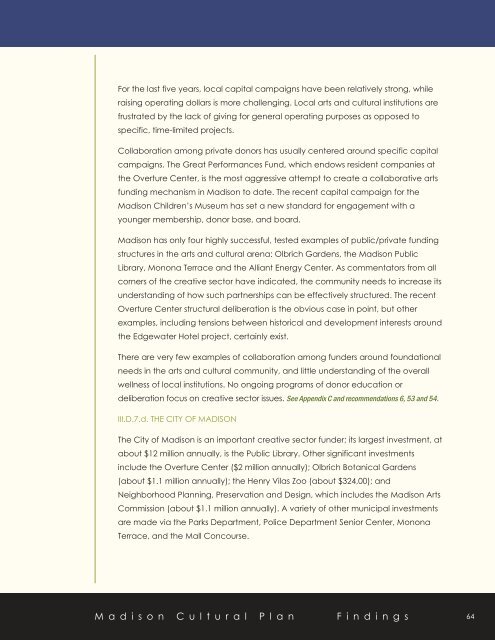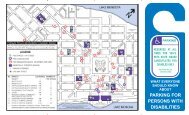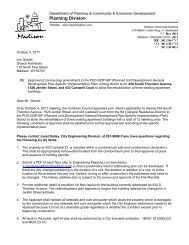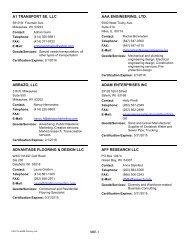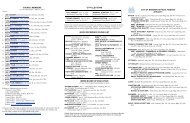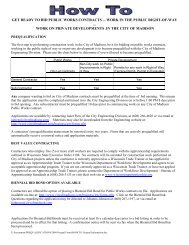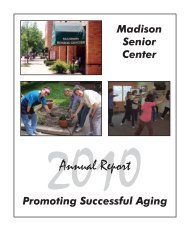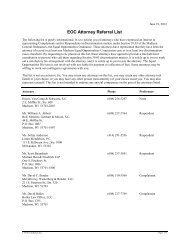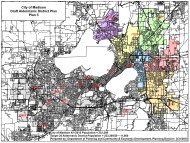Madison Cultural Plan 2011 - City of Madison, Wisconsin
Madison Cultural Plan 2011 - City of Madison, Wisconsin
Madison Cultural Plan 2011 - City of Madison, Wisconsin
You also want an ePaper? Increase the reach of your titles
YUMPU automatically turns print PDFs into web optimized ePapers that Google loves.
For the last five years, local capital campaigns have been relatively strong, while<br />
raising operating dollars is more challenging. Local arts and cultural institutions are<br />
frustrated by the lack <strong>of</strong> giving for general operating purposes as opposed to<br />
specific, time-limited projects.<br />
Collaboration among private donors has usually centered around specific capital<br />
campaigns. The Great Performances Fund, which endows resident companies at<br />
the Overture Center, is the most aggressive attempt to create a collaborative arts<br />
funding mechanism in <strong>Madison</strong> to date. The recent capital campaign for the<br />
<strong>Madison</strong> Children’s Museum has set a new standard for engagement with a<br />
younger membership, donor base, and board.<br />
<strong>Madison</strong> has only four highly successful, tested examples <strong>of</strong> public/private funding<br />
structures in the arts and cultural arena: Olbrich Gardens, the <strong>Madison</strong> Public<br />
Library, Monona Terrace and the Alliant Energy Center. As commentators from all<br />
corners <strong>of</strong> the creative sector have indicated, the community needs to increase its<br />
understanding <strong>of</strong> how such partnerships can be effectively structured. The recent<br />
Overture Center structural deliberation is the obvious case in point, but other<br />
examples, including tensions between historical and development interests around<br />
the Edgewater Hotel project, certainly exist.<br />
There are very few examples <strong>of</strong> collaboration among funders around foundational<br />
needs in the arts and cultural community, and little understanding <strong>of</strong> the overall<br />
wellness <strong>of</strong> local institutions. No ongoing programs <strong>of</strong> donor education or<br />
deliberation focus on creative sector issues. See Appendix C and recommendations 6, 53 and 54.<br />
III.D.7.d. THE CITY OF MADISON<br />
The <strong>City</strong> <strong>of</strong> <strong>Madison</strong> is an important creative sector funder; its largest investment, at<br />
about $12 million annually, is the Public Library. Other significant investments<br />
include the Overture Center ($2 million annually); Olbrich Botanical Gardens<br />
(about $1.1 million annually); the Henry Vilas Zoo (about $324,00); and<br />
Neighborhood <strong>Plan</strong>ning, Preservation and Design, which includes the <strong>Madison</strong> Arts<br />
Commission (about $1.1 million annually). A variety <strong>of</strong> other municipal investments<br />
are made via the Parks Department, Police Department Senior Center, Monona<br />
Terrace, and the Mall Concourse.<br />
<strong>Madison</strong> <strong>Cultural</strong> <strong>Plan</strong> Findings<br />
64


